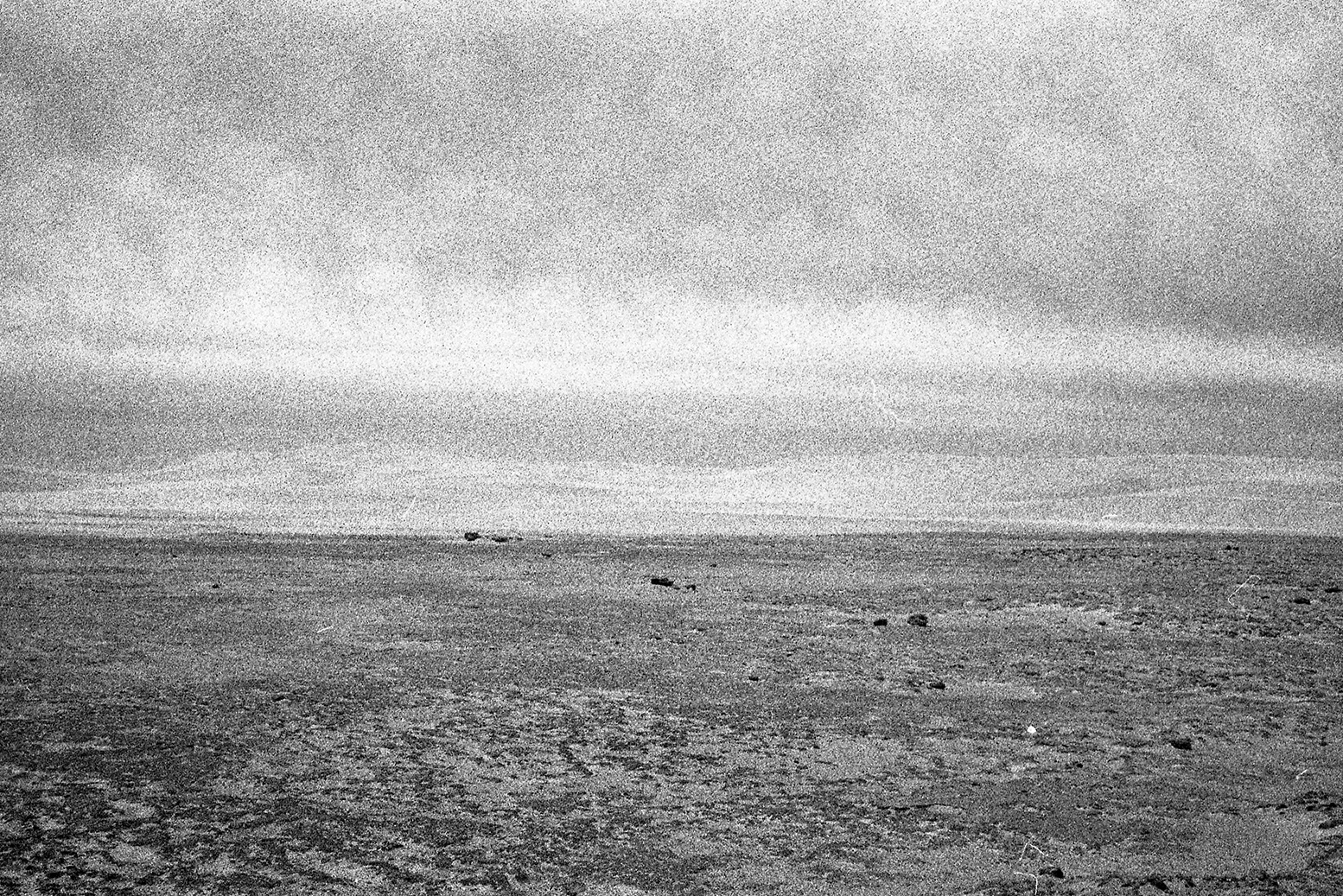
What does the future hold? Today, with the looming threats of climate change, global conflict, and resource scarcity, it can feel like there is no tangible sense of futurity. The past looms grotesque—a great, hulking beast of information, artefacts, and evidence. The future, by contrast, is a blind horizon. We are travelling through time in a constantly shifting moment. Suffering under the weight of history, it often feels as though there are no other tangible possibilities, except those of the present, available to us.
This constantly shifting present emerges from a past littered with remains, both large and small. The rise and fall of civilisations and the artefacts of many alien cultures exist there, as do the small objects and images we imbue with memory. In this way we are the future of many pasts lost. History is the evidence of entropic, often malevolent forces leaving a rubble-strewn path leading to our present. It appears to us like a Frankenstein’s monster—constructed from the sewn-together parts of many dead things. History of not the past in any true sense. Rather, it is a creature of the now, created for contemporary purposes.
Perhaps it is no wonder then that today so many of us are oriented towards the blind horizon of the future. Over there might lie some other way of living, maybe something better than the now. While we cannot know what world might exist on the other side, we can ask ourselves what world we might want this to be. We can divine hypotheses, hazard guesses, formulate strange prophesies. We can make a model of the world as we might want it and examine it for flaws and weaknesses.
This process is not exact. We gesture towards this horizon with imprecise language. The past haunts us like a ghost—terrible, spectral, possessive. The future come to us like a dream—abstract, limited, incongruous. This imagination is often inaccurate and opaque. However, it is in the gaps between things that we find new possibilities. In the shadows we cast with our imaginings we can glimpse the silhouette of what we cannot see, think, or hear. In failing to cohesively imagine an alternative to the past, or a better future, we find the limitations of our utopian imagination in the present. You cannot imagine a colour you do not know, but you can consider the possibility of one existing.
Artworks have a specific quality in relation to this process of imagining utopias. They are permitted to be fuzzy, out of focus, inaccurate. Art can draw on a broad vernacular of images, objects, sounds, words, and ideas, and reconfigure them into unique combinations. Disparate elements can be brought in relation to one another. Novel combinations of past and present can be proposed. However, like all other means of imagination, art cannot meaningfully predict the future in any real sense. Just like us, it cannot know what lies on the other side of that blind horizon. What art can do is ask what is meaningful to us now, and whether this might be worth preserving for futures yet to come.
This text originally accompanied the exhibition Perimeter Feeling, held at Nyisztor Studio, 15–30 April 2023.
Image credit: Reece Cahill
This constantly shifting present emerges from a past littered with remains, both large and small. The rise and fall of civilisations and the artefacts of many alien cultures exist there, as do the small objects and images we imbue with memory. In this way we are the future of many pasts lost. History is the evidence of entropic, often malevolent forces leaving a rubble-strewn path leading to our present. It appears to us like a Frankenstein’s monster—constructed from the sewn-together parts of many dead things. History of not the past in any true sense. Rather, it is a creature of the now, created for contemporary purposes.
Perhaps it is no wonder then that today so many of us are oriented towards the blind horizon of the future. Over there might lie some other way of living, maybe something better than the now. While we cannot know what world might exist on the other side, we can ask ourselves what world we might want this to be. We can divine hypotheses, hazard guesses, formulate strange prophesies. We can make a model of the world as we might want it and examine it for flaws and weaknesses.
This process is not exact. We gesture towards this horizon with imprecise language. The past haunts us like a ghost—terrible, spectral, possessive. The future come to us like a dream—abstract, limited, incongruous. This imagination is often inaccurate and opaque. However, it is in the gaps between things that we find new possibilities. In the shadows we cast with our imaginings we can glimpse the silhouette of what we cannot see, think, or hear. In failing to cohesively imagine an alternative to the past, or a better future, we find the limitations of our utopian imagination in the present. You cannot imagine a colour you do not know, but you can consider the possibility of one existing.
Artworks have a specific quality in relation to this process of imagining utopias. They are permitted to be fuzzy, out of focus, inaccurate. Art can draw on a broad vernacular of images, objects, sounds, words, and ideas, and reconfigure them into unique combinations. Disparate elements can be brought in relation to one another. Novel combinations of past and present can be proposed. However, like all other means of imagination, art cannot meaningfully predict the future in any real sense. Just like us, it cannot know what lies on the other side of that blind horizon. What art can do is ask what is meaningful to us now, and whether this might be worth preserving for futures yet to come.
This text originally accompanied the exhibition Perimeter Feeling, held at Nyisztor Studio, 15–30 April 2023.
Image credit: Reece Cahill
